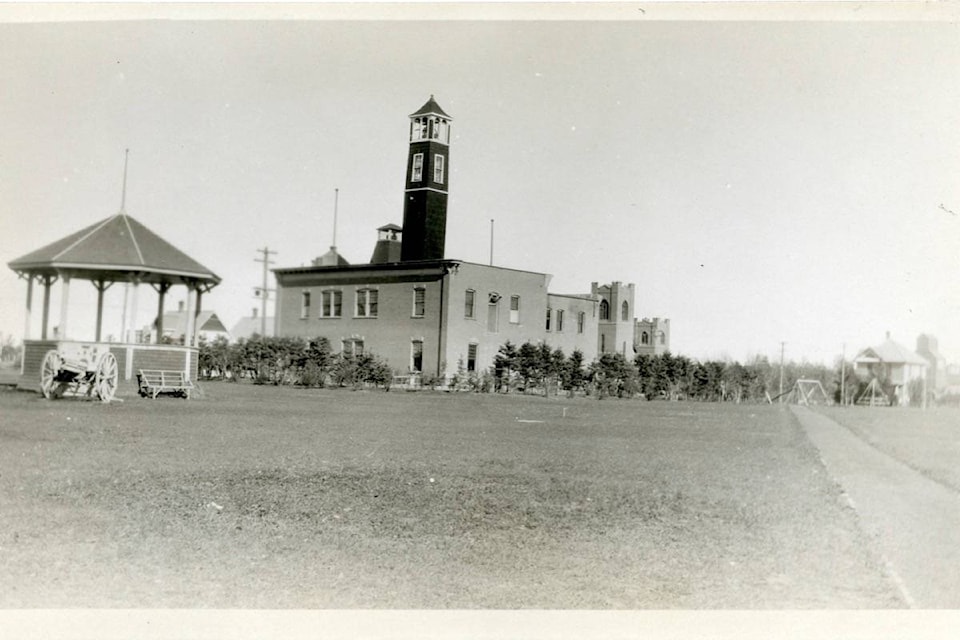The onset of the pandemic has led to a lot of speculation about the economic consequences of this global event.
Most economists are predicting a significant economic downturn — one that might rival the Great Depression of the 1930s in its intensity. Hopefully, that will not be the case.
Alberta was hard hit by the Depression. The economy was largely agriculture based. By 1932, often considered the deepest point of the Depression, wheat had fallen to a mere 21 cents a bushel.
Cattle prices dropped to such low levels that sometimes, animals sold for less than the cost of sending them to market.
At first, the Alberta government followed a lot of traditional policies to deal with the hard times. Public works projects were started to provide employment, including a grand new courthouse in Red Deer.
Social welfare payments, called “relief,” were instituted to support the unemployed and/or destitute. However, relief payments were largely left to the municipalities to fund.
At the same time, general expenditures were cut back dramatically to keep the size of public deficits and debts down.
The Alberta Provincial Police was disbanded in 1931, with provincial policing being taken over by the RCMP.
The federal government shut down the radio beacon on the south side of Red Deer that had been used to ensure the safety of air traffic, particularly airmail flights.
Wages paid to civil servants who were not laid off, were slashed.
By the middle of the decade, it seemed that none of this was working. Unemployment remained very high. Businesses continued to go bankrupt. Farmers shifted to largely subsistence living as their produce and livestock fetched such low returns.
Albertans turned to much more radical politics in an attempt to find more effective solutions to the ongoing hard times.
In August 1935, the Social Credit movement swept to power in the Alberta election, even though it had never elected an MLA before. Every member of the incumbent United Farmers of Alberta government was defeated.
Despite its promises to solve the economic woes, particularly with a (never implemented) $25 per month “social dividend” payment to all Albertans, the new Social Credit government initially adopted fairly traditional approaches to the provincial budget.
To deal with the ballooning debt, more austerity measures were adopted. Attempts were made to reduce interest costs and to secure public and private debt relief.
The Social Credit government even implemented a two per cent provincial sales tax, a measure that was very unpopular with the public.
Finally, matters hit a crisis point. On April 1, 1936, Alberta became the first province in Canada to default on its debt.
Investors became even more reluctant to invest in Alberta. The federal government did provide some fiscal relief payments, but it too was hampered by severe deficit and debt problems.
Alberta then passed very radical legislation. A law was passed arbitrarily cutting interest rates in half. Foreclosures on farms were suspended.
At one point, it was proposed that if a bank foreclosed on a family’s home, it would be required to offer a $2,000 payment in compensation.
The most radical idea was to create an Alberta currency. Officially called “prosperity certificates” and nicknamed “funny money,” the provincial government used the certificates to pay part of civil service salaries and some government expenses.
However, a one-cent stamp had to be added to the back of each $1 certificate by the end of every week. The idea was to encourage people to spend the certificates quickly. Instead, people increasingly refused to accept them as currency.
Ultimately, the Social Credit government’s radical measures ended up in the courts. The Supreme Court ruled that just about every bill was ultra vires – beyond the legal authority of the province to implement.
One exception was the creation of the public Alberta Treasury Branches.
There was huge rage by the provincial government over these disallowances. In retaliation, the utilities to the official residence of the Lieutenant Governor were cut off to force him to move out.
Nevertheless, the legal rulings held. Social Credit had to go back to more traditional measures to combat the economic woes.
The Great Depression finally came to an end in the fall of 1939 with the outbreak of the Second World War.
Red Deer historian Michael Dawe’s column appears Wednesdays.
